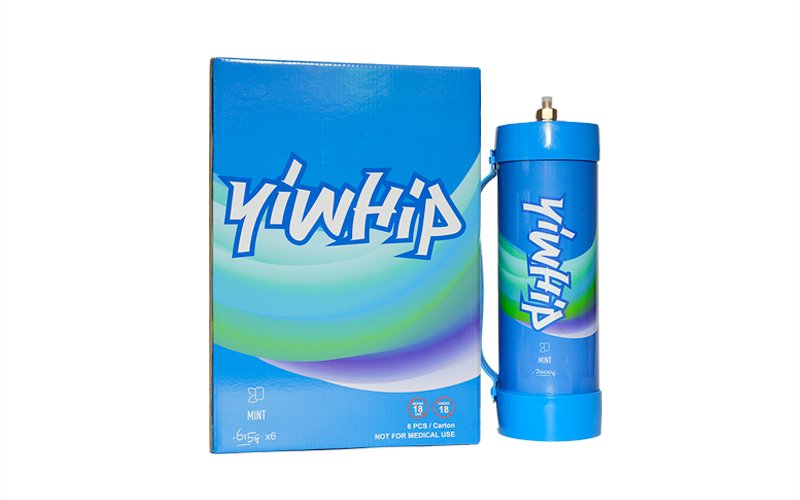Understanding the US Nitrous Oxide Supplier Ecosystem
The United States is not just a leader in technological innovation—it also happens to dominate niche food-grade gas supply segments such as that of **cream chargers**, or N2O cartridges intended for culinary applications. For international buyers, especially Danes who take gastronomy quite seriously, the market presents an enticing mix of high-quality products, competitive pricing, and logistical hurdles all at once. Selecting the perfect U.S.-based cream charger supplier, therefore, demands more than casual research or reliance solely on Amazon listings. You need a well-documented selection process guided by criteria beyond surface-level appearances—let's break them down.
1. Certifications Aren't Just Red Tape—they’re Safety Seals
In Europe—and Denmark in particular—the food industry adheres to rigorous safety protocols like **Fødevarestyrelsen standards**. It’s logical then that if you're buying nitrous oxide for professional food preparation across the sea, it should comply with **U.S. FDA guidelines**, ideally with dual certifications indicating both domestic and potential export compliance.
- DOT-certified cylinders: Ensure compliance with U.S. federal hazardous material shipping laws, crucial when dealing with bulk imports by air or sea
- ISO 9001 & ISO 22000 registered manufacturers: Offer quality assurance and production traceability—a non-negotiable when your customer base expects nothing less than perfection
- Cleanroom filling lines: These drastically minimize impurities—an aspect not just vital to molecular cuisine aficionados, but essential for health inspections in Scandinavian foodservice sectors
2. Supply Consistency vs. Seasonal Scarcity: Don’t Be Surprised by Empty Backorders
If 2022 or 2023 showed us anything, it's that raw ingredients can disappear overnight—not just coffee, salmon, or flour but industrial gases. Due to a combination of environmental controls, manufacturing downtime in chemical complexes, and global supply chain disruptions exacerbated by weather and geopolitics, nitrogen supplies fluctuate more than before. That volatility directly influences oxide availability in canisters, affecting small-batch producers and distributors in the U.S., even those serving commercial cafes abroad like many you may supply within Jylland or København. So how do you avoid being stuck with backorders while trying to stock up your restaurant's kitchen equipment?
A reliable indicator of preparedness among vendors is their stock management policies and forward-order planning visibility. Suppliers equipped with multiple production facilities tend to handle sudden surges better, allowing for cross-country load distribution.
3. Carbon Calculus: Environmental Compliance Matters to Scandinavians (Even in Cream Chargers)
To operate ethically in Copenhagen-based eateries pushing the limits on sustainable cooking methods, your carbon narrative needs more substance than recycled aprons and zero-waste garnishes—it must extend into every element, including your whipped cream cartridges. While most users don’t dwell deeply on nitrous oxide emissions beyond food texture or volume puff, it pays—literally sometimes—to know whether your chosen manufacturer recovers and processes spent N2O properly. Not only does proper reclamation make environmental sense, but in certain parts of Scandinavia, particularly Sweden and Oslo, there's legislation tightening its release into the atmosphere under national net-zero goals.
When assessing cream charger brands, explore questions like:
- Does the company invest in recovery tech or recycling loops at industrial scale?
- Are they transitioning into green nitrous production methods?
4. Shipping Logistics Aren’t Just Cost Factors: They’re Cultural Considerations Too
Sometimes overlooked in sourcing discussions, shipping details actually carry major practical weight for overseas clients—especially for something as volatile and strictly categorized as gas. Many first-timers fall into a false sense of affordability until delivery delays hit mid-week or weekend deliveries go unfulfilled due to unexpected holidays like Independence Day.
Navigating freight requires attention to:
- Incoterms (CFR, DDP), customs duties inclusion—particularly if purchasing through resellers
- Distributor presence in continental European hubs—Denmark does not host large nitrous filler stations onshore, thus regional partnerships affect turnaround times
- Shipping partners that hold DGSA licenses and understand compressed gases regulations for inter-North Atlantic trade corridors between Chicago to Esbjerg port
Bonus Round: Do They Actually Listen?
This one may feel subjective, but in this digital, inbox-saturated world we're navigating, support response time, cultural empathy toward language preferences, and customization requests handling speak volumes about professionalism. Are they offering technical spec sheets bilingual-friendly in English-Danish? Do representatives seem to care if an event organizer in Odense needs same-pack quantities customized differently than the average U.S. bakery chain buyer?
Pick vendors with responsive account managers and multi-region customer touch-points—you'll rarely regret the human-centered extra layer in vendor-vendor communication loops where automation falls short and urgent scaling issues strike suddenly at 6pm local Copenhagen time during busy winter catering seasons. Trust us.
Wrapping Up: Building Your Selection Framework With Real Value Points
At the end of this complex maze of certification reviews, climate concerns, logistical hiccups, linguistic compatibility assessments—and yes—we suggest distilling the decision into actionable value indicators. Here are some bulletins worth noting down:
- Only work with certified, audited manufacturers with traceable quality logs (preferably accessible via web portals)
- Avoid price-only comparisons without examining shelf life, recyclability, refill options, batch consistency
- Prioritize suppliers operating on renewable infrastructure, with concrete green roadmaps, especially those compliant to EU RoHS-like restrictions or compatible with future Danish emission norms
- Multiply risk coverage by asking what happens—if any—during factory outages and how inventory buffers function under tight demand windows (say, Christmas season prep starting October-November)

